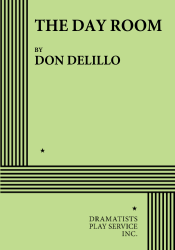
THE STORY: The play opens in a brightly lit hospital room occupied by two men. One, the amiable Budge, does Tai Chi exercises while trying, without much success, to strike up a conversation with his taciturn roommate, Wyatt. Then, slowly but inexorably, their world begins to spin away from reality as they are visited by a series of fellow patients and hospital staffers, all of whom, it turns out, may not be what they seem. Oddly normal, but also oddly frightening, it is soon apparent that they have strayed in from the psychiatric ward of the adjacent Arno Klein Wing and are all quite mad. In the second act, which is set in the day room of the psychiatric ward, the same performers reappear but with different identities. Some of them, claiming to be actors, transform the room into a tacky motel suite in which a play-within-the-play is to take place; others become tourists searching for the renowned “Arno Klein Theater Company"; and one man, strait-jacketed and tied in a chair, “becomes” a television set. At last Arno Klein himself appears, and proves to be the man (Budge) who started the play. So, in the end, we have come full circle, with appearance and reality, madness and normality, still tantalizingly undefined, and with the growing conviction that all the world may indeed be no more than a stage—and all its inhabitants merely players.
The first play by one of America’s most successful and respected novelists, this surreal comedy is both perplexing and consistently amusing as it probes the limits of reality through a Pirandelloesque examination of a bizarre sequence of ambiguous events—and people.
“THE DAY ROOM is an intellectual mystery, a metaphysical comedy, and absurdist riddle.” —Boston Herald.
“…a cheerful, often hilariously wicked, commentary on life and death, both seen in terms of a theatrical event.” —New York Post.
“DeLillo gives his characters incisively lunatic commentaries on death, the nature of illness, the hierarchical abuses of power and on reality itself.” —San Francisco Chronicle.
